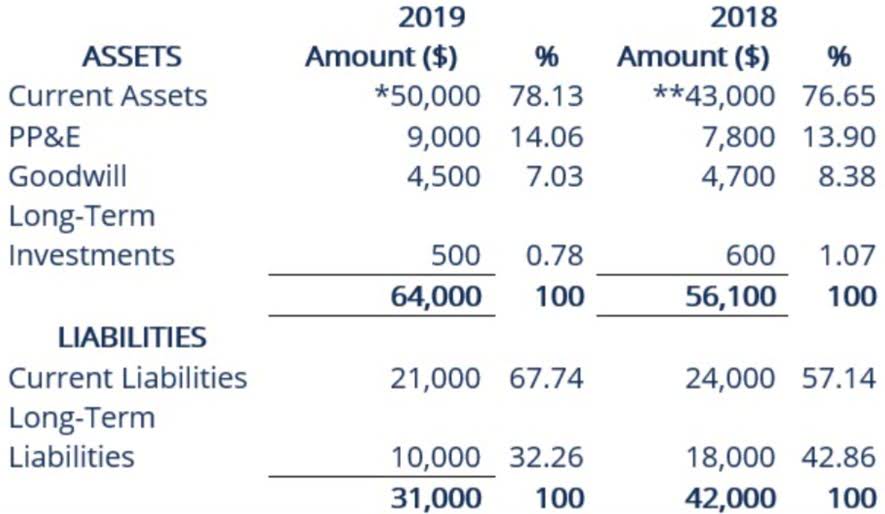
To avoid this, businesses should implement a predetermined overhead allocation rate that reflects actual production volume. Regularly updating this rate ensures that overhead costs are appropriately assigned to each unit, maintaining cost accuracy as production levels change. Keeping your absorption costing method consistent across all of them is important for accurate overall reporting. This characteristic of absorption costing can lead to retained earnings balance sheet differences in reported profits compared to variable costing, especially when there are changes in production levels and inventory levels. Fixed manufacturing overhead costs are indirect costs and they are absorbed based on the cost driver. The disadvantages of absorption costing are that it can skew the picture of a company’s profitability.
What is Variable Costing?
It works by totaling all the manufacturing costs for a period and dividing that sum by the total number of units manufactured during that same time frame. When you make a sale, the cost becomes part of the cost of goods sold (COGS), an expense that reduces your reported profit. This method helps match the expense of making a product with the revenue earned from selling it in the same accounting period, which aligns with the matching principle of accounting. Absorption costing includes all manufacturing costs in the value of your inventory. This includes the cost of all materials that are directly used in the manufacturing process. These materials can be easily traced to a specific product, such as raw materials and components.
What is the difference between direct and indirect costs?

Contrastingly, period costs are expenses that are unrelated to the direct manufacturing of the product. Examples include marketing expenditures, depreciation of non-manufacturing assets, and administrative expenses. These costs are designated as period costs and are reported on the income statement for the period in which they are incurred. Consequently, they do not contribute to the value of inventory on the balance sheet. No, absorption costing includes both fixed and variable costs in the cost of goods sold, whereas variable costing only includes variable costs.
Advantages of absorption costing
Absorption costing, also referred to as full absorption costing, is an important accounting method that assigns all costs related to producing a product, ensuring every unit reflects its full production costs. This method ensures accurate product pricing and compliance with accounting standards like GAAP, making it vital for proper financial reporting and understanding a company’s true absorption costing formula total cost of production. The reporting tools within the Enterprise Suite are flexible, letting you organize information in detail. You can generate the standard financial statements you need, plus custom reports that clearly reflect your costs based on absorption costing rules. This gives you a better view of profitability based on the full costs of production.

This article will discuss not only the definition of absorption costing, but we will also discuss the formula, calculation, example, advantages, and disadvantages. Over the year, the company sold 50,000 units and produced 60,000 units, with a unit selling price of $100 per unit. Since this method shows lower product costs than the pricing offered in the contract, the order should be accepted. Absorption costing is a managerial accounting method for capturing all the costs related to manufacturing a product. Absorption costing is also known as full absorption costing or full costing. Stock/ stock value includes direct labour, direct material, and all overhead.

The value of the remaining inventory is $3.50 per tee times 3,000, which totals $10,500. Per unit method of absorption of overhead is used when the output is measured in physical units like number, weight, etc. (4) The machine expenses are estimated separately and then divided by the number of working hours to give hourly rate for each item.
- Absorption costing is a common method used by manufacturing businesses for several important reasons.
- Handling absorption costing means you need to accurately track all your manufacturing costs and allocate overhead correctly.
- An effective review process ensures that product and period costs remain accurate, preventing discrepancies in balance sheet entries and income statements.
- However, these costs are not included in the calculation of product cost per the AC.
- Under absorption costing, the cost per unit is direct materials, direct labor, variable overhead, and fixed overhead.
Disadvantages of absorption costing
Knowing how much it costs to make your products is key to running a profitable manufacturing business. Since absorption costing includes allocating fixed manufacturing overhead to the product cost, it is not useful for product decision-making. Absorption costing provides a poor valuation of the actual cost of manufacturing a product. Therefore, variable costing is used instead to help management make product decisions.
The Strategic Advantages of Absorption Costing: Comprehensive Financial Reporting and Profit Maximization
Maybe calculating the Production Overhead Cost is the most difficult part of the absorption costing method. The following is the step-by-step calculation and explanation of absorbed overhead in applying to Absorption Costing. It is very important to understand the concept of the AC formula because it helps a company determine the contribution margin of a product, which eventually helps in the break-even analysis. The break-even analysis can decide the number of units required to be produced by the company to be able to book a profit. Further, the application of AC in the production of additional units eventually adds to the company’s bottom line in terms of profit since the additional units would not cost the company an additional fixed cost. This approach provides clearer insights into incremental production costs and profitability per unit but does not comply with GAAP for external reporting.
- While absorption costing is typically used in manufacturing, it can also be adapted for service industries that have significant indirect costs that need to be allocated.
- Absorption costing is an advanced managerial accounting technique that values inventory by including all direct costs as well as both fixed and variable overhead expenses.
- It effortlessly combines inventory management and costing activities with accounting and financial reporting.
- Unlike variable costing, which only considers direct variable costs and not fixed costs, absorption costing ensures that fixed overhead costs are spread across all units produced.
- It is the method of adding all costs incurred in the process of production and then determining the per unit cost.
- This method is crucial for businesses in manufacturing, service industries, and those engaged in financial reporting.
Please Sign in to set this content as a favorite.
These include expenses like rent for the manufacturing facility, depreciation on machinery, and salaries of supervisors. Variable overhead costs directly relating to individual cost centers such as supervision and indirect materials. You need to allocate all of this variable overhead cost How to Run Payroll for Restaurants to the cost center that is directly involved. It is to be noted that selling and administrative costs (both fixed and variable) are recurring and, as such, are expensed in the period they occurred.

This cost category covers the wages and benefits paid to employees who are directly involved in converting raw materials into finished goods. This human effort physically creates the product, including operating machinery, assembling components, and performing tasks essential to production. Expenses incurred to ensure the quality of the products being manufactured, such as inspections and testing, are included in the absorption cost.
